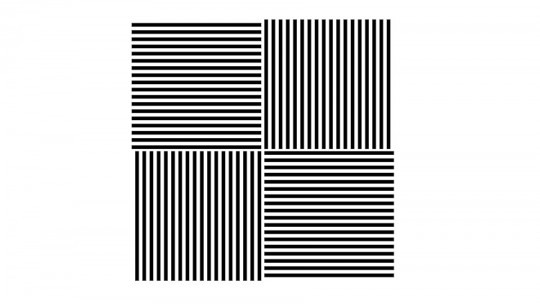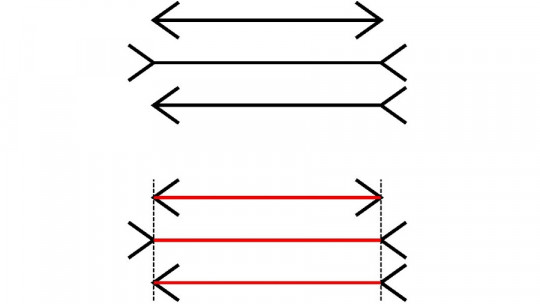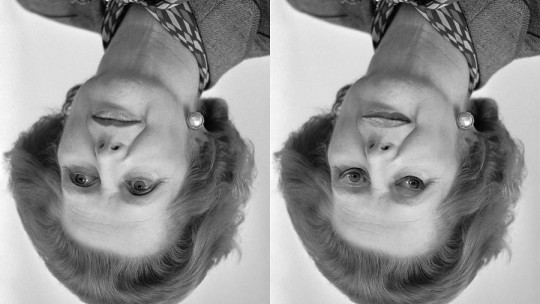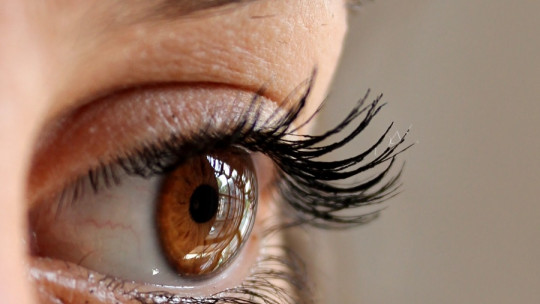Optical illusions can be very curious. Generally, they occur when we are exposed for a period of time to very specific patterns of shape and/or color; altering the conventional way we perceive lines, curves and even more complex stimuli (the human face, for example).
Illusions are also phenomena that are expressed in completely healthy people, and that generally revert in just a few seconds. This is precisely what distinguishes them from hallucinations, which usually persist and do not arise from objects within the perceptual frame.
In this article we will address what is one of the most relevant optical illusions in the history of science, the McCollough effect, whose particularities have surprised the entire research community during decades. Still, in fact, we do not have a theoretical model that can explain it in its entirety.
What is the McCollough effect?
The McCollough effect was discovered in 1965 by Celeste McCollough, a psychologist who was already studying other perceptual phenomena in the first decades of the last century, although it was defined more exhaustively over subsequent years.
It is an optical illusion included in the posteffect category, that is, afterimages that require a prior period of exposure to a specific pattern of stimuli to unfold. In these cases, very specific colors or shapes are usually used, which only affect the most superficial aspects of visual processing and last a few seconds.
The effect at hand, however, is somewhat more complex and has been considered a potentially explanatory mechanism for the way in which visual stimuli are usually integrated at a central level. That is why for many years, since it was first described, it has motivated various investigations in which the original methodology has changed in order to explore the exact origin of the phenomenon. Despite everything, there is still a lack of definitive knowledge on this matter, although there are some clues that guide where to continue searching.
Next we will see how to carry out the procedure or, what are the “effects” that can be foreseen after it and the mechanisms that are at their basis. However, it is essential to point out at this point that we are not facing a game, but rather a methodology that promotes changes in brain structures and that lasts for a long time (depending on how it is carried out). Everything that is described below comes from the scientific heritage on this issue and is interesting to know, but it should not be carried out without the corresponding information and always under the full responsibility of whoever decides so.
Procedure
The McCollough effect (like the rest of the illusions in its category) requires a prior induction stage, in which the person must be exposed to two colored gratings alternately. Specifically, it is a pattern of red horizontal lines (on a black background) and another of green vertical lines (with the same background). Both are shown to the subject for about three seconds, oscillating from one to the other for a period of time that generally lasts three minutes (although it may vary depending on the intention of the person carrying out the study).
After this adaptation period, the person is shown a figure composed of black/white lines, arranged both horizontally and vertically. It is a complex grid that includes the patterns described above, but at this stage it lacks any chromaticism (it only preserves the direction of the lines). This new stimulus is presented to the subject in a contingent way (at the end of the induction phase), and the first evidence of perceptual alteration appears on it. Sometimes, this monochrome figure is also shown before the induction, so that it can be seen that it really lacks colors and the effect is more evident.
The illusory effect
After exposure to the colored grids, the person will observe that the originally monochrome grid will acquire different shades in the white spaces. More specifically, you will notice that the horizontal ones will acquire a greenish tone and the vertical ones will acquire a reddish/pinkish tone. That is, the “inverse” to those shown during the previous induction period (their negatives). Up to this point it is nothing too striking or new, since there is a great variety of “tricks” to reproduce the same effect, but in the one in question there would be a peculiarity: it can last many days, up to three and a half months in the case of very long induction periods.
The effect has also been reported with lines of different colors, such as blue and orange , with results whose duration is directly related to the induction time. Thus, it has been tested with periods of just a few seconds and up to 150 minutes, with the latter cases being the ones in which greater persistence of the afterimage is reported. In any case, there were many people who used computer monitors (green phosphorus) in the decades of the 60s-80s who were able to offer pioneering testimony on this matter, since they reported reading books with a soft pink or red background.
Furthermore, it has been proven that the intensity of the post-image colors is also linked to the total pre-exposure time, in such a way that those who only observe the original green/red frames for a few minutes will only be able to distinguish pale negatives of both (light greenish and red tones). pink), but those who expose themselves for ten minutes or more will appreciate them much more vividly and clearly. Thus, both the intensity and the duration will depend closely on the previous induction period.
Another very curious fact about the McCollough effect is that what is known as an interocular transfer occurs: although the test is only carried out using one eye, its consequences extend to both. Many of our readers may be able to conjure up the experience of exposing their eyes (unintentionally) to different levels of light, in such a way that one of them perceived darker tones and the other lighter ones. In this case there would be no interocular transfer, since the effect is found in the retinal cells related to light perception (rods/cones), but then… what happens in the case at hand? Let’s continue investigating.
Why happens?
Many different theories have been postulated over the years to explain why the McCollough effect occurs, but we still have partial knowledge about the issue. The first hypotheses were based on the possibility that it was a phenomenon based on the principles of classical or Pavlovian learning (remodeling of the nervous system based on the continuous presentation of the stimulus), but it was rejected due to the fact that it only occurred with linear figures. , and not with curves or other more complex shapes.
The second hypotheses were related to the activity of retinal cells associated with color : the cones, since they have photopigments for blue (cyanolabe), red (erythrolabe) and green (chlorolabe); that tend to decay due to chromatic antagonism resulting from simple overexposure. This is what usually happens during a conventional afterimage illusion. However, in these cases the change is only maintained for a few seconds (a few minutes at most), and there is never a transmission of this to both eyes, which is why it is a line that was discarded for the McCollough effect.
On the other hand, it is evident that in a natural environment the green/red linear pattern that forms the stimulus that triggers this illusion can rarely be appreciated, so It is possible that the brain interprets it as some kind of sensory aberration and promote mechanisms to “compensate” it during the processing of visual information. In this case, for its explanation we should resort to the substrate of the central nervous system, ignoring the learning and sensory theses. Is it possible that the answer lies precisely in this mysterious organ?
The brain and the McCollough effect
When we expose ourselves to a stimulus for a long time, the brain stops trying to pay attention to it and simply “understands” that this is the case, starting to “ignore” it and leaving its resources available to perceive the rest of the things in the environment. . The same thing may be happening to you right now if you are reading this article from a mobile phone: Even though you hold it with one hand, your brain is isolating everything accessory from the experience (its feeling of weight, for example), and only makes an effort to understand the text. Well, a similar phenomenon happens with the illusion that concerns us.
When the eyes are exposed to green/red lines constantly, the brain comes to understand that this pattern (very rare in nature) will always be like this in any of the possible situations. For this reason, It will anticipate it in the presence of stimuli that harbor a relationship of similarity with it, such as horizontal and/or vertical monochrome lines. This will also occur throughout the first phases that occur as part of visual processing, but beyond what occurs before reaching the retina (due to the aforementioned interocular transfer effect).
Thus, what is hogging the spotlight in recent years is the primary visual cortex, which is located in the posterior region of the brain parenchyma (occipital lobe). This area (V1) is specialized in the perception of static and moving objects, but above all in the recognition of patterns (such as those that occur during the induction phase of the McCollough effect). Likewise, it is also the point at which the images of both eyes merge forming integrated and coherent scenes (binoculars).
The hypothesis that is currently being given greater consideration involves alterations in this area, which is basic to understanding the way we represent colors and shapes at a cortical level. Despite this, they still remain uncorroborated models, heuristics that serve to guide research activity (based on neuroimaging techniques and comparative studies that include subjects with very diverse brain lesions).
Although the aforementioned effect tends to fade as time passes, there is also a supposed method to stop it. In this case, new gratings would be presented (but with their color reduced) to help the brain relearn that the previous pattern is no longer valid (and recover a “normalized” perception). The McCollough effect is considered a method to “modify” the brain structure through exposure to an image, and although its effect is not permanent, it should not be carried out without precise knowledge of what it is and its scope. .









